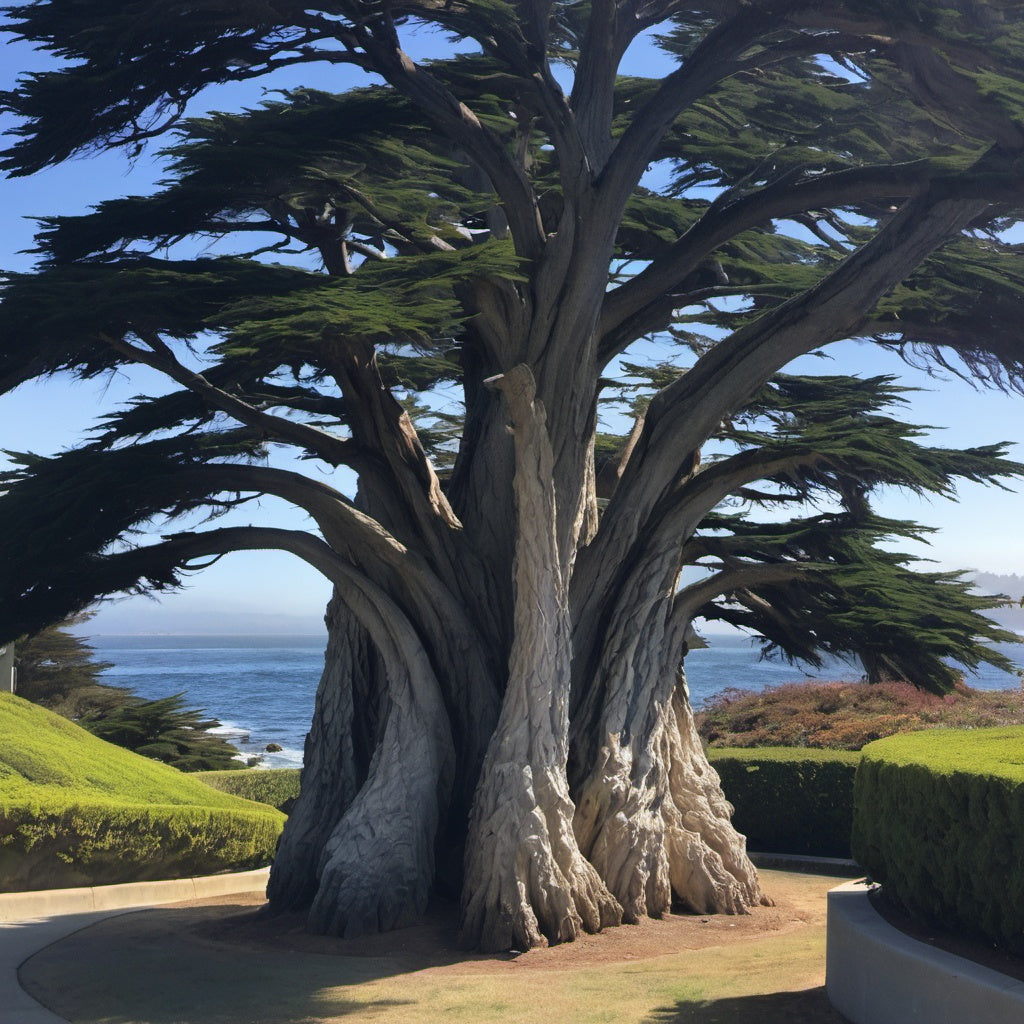Monterey Cypress Tree Seeds
Monterey Cypress Tree Seeds
Couldn't load pickup availability
Monterey Cypress Tree Seeds
(Cupressus macrocarpa)
Cupressus macrocarpa, commonly known as the Monterey Cypress, is an evergreen tree native to the central coast of California, particularly found in two small natural groves at Point Lobos and Cypress Point. This species is renowned for its striking, twisted branches and resilience to coastal winds, making it a dramatic silhouette against rugged coastal landscapes.
Key Characteristics
- Appearance: Monterey cypress has a thick trunk, with bark that is gray and fibrous, peeling in long strips. Its foliage is dense, with bright green to dark green scale-like leaves.
- Height: In optimal conditions, it can reach up to 40 meters (130 feet), though it’s often shorter in the wild due to coastal winds.
- Longevity: These trees can live for hundreds of years, but they tend to develop a characteristic windswept, gnarled form over time.
Growing Conditions
- Climate: Prefers a Mediterranean climate with mild, wet winters and dry summers.
- Soil: Well-drained soils are best, although it can tolerate poorer soils and rocky conditions.
- Sunlight: Full sunlight is ideal, especially since it thrives in exposed coastal areas.
- Watering: Requires moderate water when young, but it becomes drought-tolerant as it matures.
Uses and Significance
- Ornamental Tree: Widely planted in gardens, parks, and along roadsides for its unique aesthetic.
- Wildlife Habitat: Provides shelter and nesting sites for various bird species, especially in coastal regions.
- Conservation: Though it has been widely planted, its native populations are very limited and vulnerable to environmental stressors, like disease and climate change.
Interesting Facts
- Wind Resistance: Monterey cypress is famous for its resistance to coastal winds, making it a symbol of strength in coastal ecosystems.
Zones: 7 to 9
Germination Range: 20-40%
Stratification Requirement: 21-30 days cold moist stratification required.
Planting Instructions:
To prepare the seeds, soak them in room temperature water for about 24 hours. This process helps soften the seed coat, allowing for better water absorption, which is crucial for germination. Once soaked, you need to cold moist stratify the seeds by placing them in moist seed starting mix inside a ziplock bag. Place the bag in the refrigerator for 21-30 days. This stratification period mimics the natural winter conditions and can encourage better germination rates.
Next, prepare a well-draining seed-raising mix. A good mix could include one part peat moss, one part sand, and one part perlite. Fill small pots or seed trays with the soil mix, and place the seeds about 1/4 inch deep. Cover them lightly with soil, and gently press down to secure the seeds. After planting, water the soil gently to avoid displacing the seeds, and keep it consistently moist but not waterlogged. Place the pots in a warm, well-lit area, ideally with a temperature between 60-70°F (15-21°C). Keep the pots covered with a clear plastic lid or plastic wrap to maintain humidity, but remove it occasionally to allow airflow and prevent mold growth.
Germination can takes anywhere from 1-2 weeks. During this period, be patient and maintain consistent soil moisture. Once the seedlings emerge, move them to a bright, indirect light source. When they reach about 3-4 inches in height and have a couple of sets of leaves, they can be carefully transplanted to larger pots. Gradually expose them to outdoor conditions over a week or two to harden them off before planting in the ground. Monterey cypress trees prefer full sun and well-draining soil, so choose a location that offers these conditions. With the right care, Monterey Cypress tree seedlings can grow into hardy, attractive trees that add beauty to landscapes and gardens.
Share


